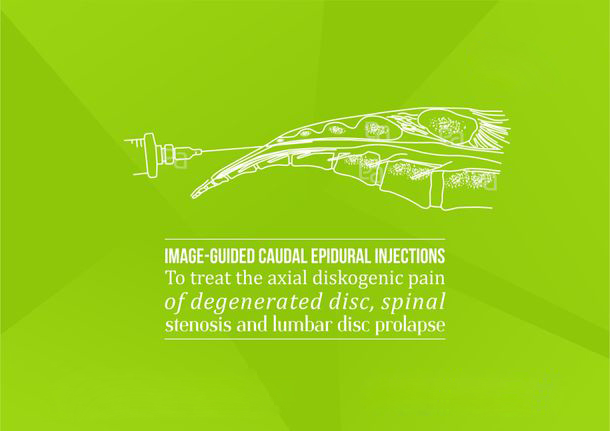

Treatments
ABDOMEN & PELVIC PAIN

Caudal Epidural Injection
What is a Caudal Epidural Injection?
Caudal epidural injection is advised for patients suffering from chronic lower back or leg pain caused by conditions including herniated discs, sciatica, bone spurs, and other back problems. It is also used in the evaluation and treatment of pelvic pain. The caudal injection process is a relatively simple outpatient procedure where medicines are injected into the caudal epidural space through a small opening in the tip of the spine.
How is Caudal Epidural injection performed?
At Atlas Pain Care, you will be asked to lie on your tummy in the procedure room. Your back will be cleaned with antiseptic and draped with sterile dressing. Local anaesthetic is given to numb the skin before the start of the procedure. The doctor will then use an X-ray machine (fluoroscope) to guide the needle into the correct spot that gives access to the inflamed nerves and spinal discs. An X-ray contrast (dye) may be injected at this point to confirm that the needle has been positioned correctly. Medicines are then injected through the needle, and the needle is removed. The procedure should take 10 to 15 minutes.
Efficacy of Caudal Epidural Injections
Some experience pain relief within a half hour of the injection, but long-term relief is typically felt within 2-3 days after the procedure. Each caudal injection may last for several weeks to several months, and patients typically have varied results with regard to the longevity of their pain relief.
What are the risks associated with caudal epidural injections?
There are very few complications associated with this procedure. The most common include injection site pain and numbness in lower limbs. On the rare occasions, a slight headache may occur. Most of these effects will resolve within a few hours. Other risks like bleeding and infection are rare. Please read our FAQ section to know more about the do's and don'ts prior to and after the procedure.

